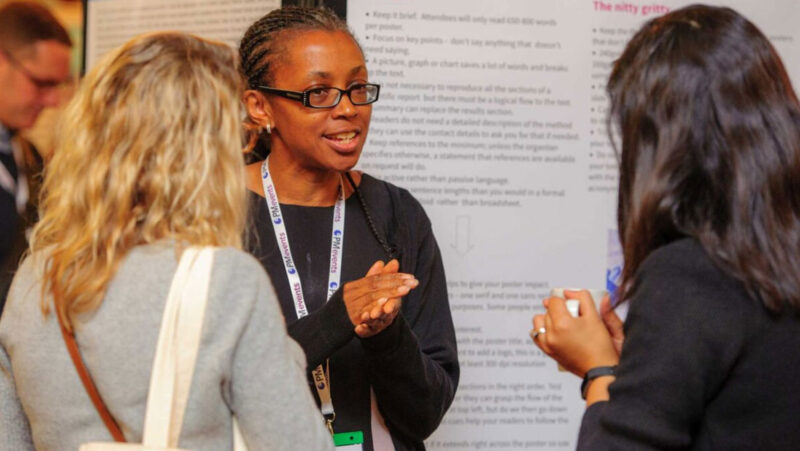Ambition and achievement is held in positive regard in many cultures. It is often instilled in early childhood, and even more so in the last 40 years with the Thatcher years promoting individualism, the late 80s economic boom bringing about the thirst for wealth, and ‘job for life’ being replaced with the ‘world is your oyster’.
More recently, younger generations have been required to fund their own higher education journeys which, coupled with economic downturns which have reduced job opportunities, has driven them to work harder and achieve more.
But the shift from education into employment brings a difference in the outcome measure of how ‘hard’ one is working. During education, the outcome measure is a relatively simple exam result. But during our employed years, it gets more difficult to measure. Is it time spent at work? The number of outputs produced? The speed of career advancement?
We often look to leaders and managers to find solutions to problems, but responsibility lies with us all. If we accept stressful workplaces, how can we be critical of others?
Even outside of work, we are rarely resting during our down time. We’re volunteering, bringing up children, organising school fundraisers, or renovating our homes. And to pile on more pressure, social media presents us with images of success and achievement, providing a biased view of reality thereby compounding the subjective comparison between peers and feeding into the perceived pressure of being ‘successful’.
So where is the line between working hard and overworking? And how do we know when we’ve crossed it?
It’s very difficult to identify, says Dr Gary Redfeather, Clinical/Medical Leadership, Education and Research Programme Lead at De Montfort University and Program Co-Director at the Pharmacy Leadership and Education Institute. Taking the time to reflect to gain that objectivity is so important but not easy to do when you are always rushing from one commitment to the next.
Even the slightest daily stress can accumulate over time to cause a huge impact. This was recognised by Dr Bruce McEwen in the early 1990s who coined the term allostatic load: the wear and tear on the body which accumulates as an individual is exposed to repeated or chronic stress.
According to research in the US, the risk of burnout is twice as high in the healthcare community as it is for the general US population, after controlling for work and other factors. Furthermore, the consequences of work‐related stress and burnout in healthcare professionals is not only reflected in their own physical and mental health, but can also impact on patient care and safety.
But recognising stress in ourselves can be difficult. We can be busy and loving our work, but working too hard, says Dr Redfeather. It’s also often easier to spot stress in others but having compassion for oneself, although critical, can be the most painful reality to become aware of.
Dr Kristin Neff’s work on self-compassion is worth looking into. Her recent research includes a brief intervention to teach self‐compassion to healthcare professionals. The intervention consisted of six one-hour sessions:
- Session 1: Introduction to the concept of self‐compassion and research on the topic dispelling common misgivings about self‐compassion (for example, that it makes you weak or complacent)
- Session 2: Introduction to self‐compassion practices such as supportive touch or using self‐talk to evoke components of self‐compassion in moments of difficulty, and learning about mindfulness practices that can be used to ground oneself when distressed
- Session 3: A focus on motivating oneself with compassion rather than self‐criticism
- Session 4: Strategies for dealing with difficult emotions
- Session 5: Discussing the topic of caregiving fatigue
- Session 6: Focusing on participants’ core values as caregivers and how to continue self-compassion practice.
Participants who took the program experienced significant increases in self‐compassion and gains in compassion for others. Depression was also significantly reduced, supporting the idea that giving compassion to one’s empathic pain and distress (the emotional drain that results from empathising with patients) can provide a buffer against its negative effects.
Mental and physical stress can lead to chronic pain. In fact, stress and chronic pain are very similar in terms of neuroplasticity (the ability of the brain and nervous system to adapt and change) and mechanistically. Pain is essential for survival, says Dr Redfeather. It is telling us that something is wrong, so learning to listen to pain is important. Equally important, he says, is the ability to handle all emotions, and not suppress them.
We learn from acute pain instantly: we do something that hurts, and we remember not to do it again. Chronic pain, however, is more subjective and we can push ourselves through the pain to the point of no return.
So what can we do to minimise and reduce our stress levels?
Dr Redfeather suggests thinking both small and big here. There may be some small changes we can make to reduce our daily stress, but we should also think more long term, and that might include educating ourselves about the impact of stress and how to be more resilient, as well as tackling workplace processes and cultures which may exacerbate or perpetuate stress.
Stressful workplaces combined with poor leadership can be detrimental to even the most resilient of people, points out Dr Fedfeather. But crucially, the workforce should be aware that they have the power to change things. We often look to leaders and managers to find solutions to problems, but responsibility lies with us all. If we accept stressful workplaces, how can we be critical of others? A leader without followers is simply a man taking a walk, so the saying goes.
Some organisations are beginning to realise that the traditional way of working is not actually working, at least in terms of human mental and physical health. Frederic Laloux’s work on creating more ‘soulful’ organisations is starting to have an impact and Dr Redfeather believes that the organisations that prioritise the health and wellbeing of their employees will ultimately be more successful. Surely that’s a win-win situation.
Acknowledgements
With thanks to Dr Gary Redfeather and Dr Lizzie Mills
who inspired this article
@DrLizzieMills @DrGRedfeather
Resources
- A sobering read: This job is (literally) killing me
- How hard are you on yourself? Test your self-compassion.
- Pharmacist Support
The opinions expressed in this article are those of the author. They do not purport to reflect the opinions or views of the UKCPA or its members. We encourage readers to follow links and references to primary research papers and guidance.
Competing interest statement:
The author declares: no support from any organisation for the submitted work; no financial relationships with any organisations that might have an interest in the submitted work in the previous three years; no other relationships or activities that could appear to have influenced the submitted work.




